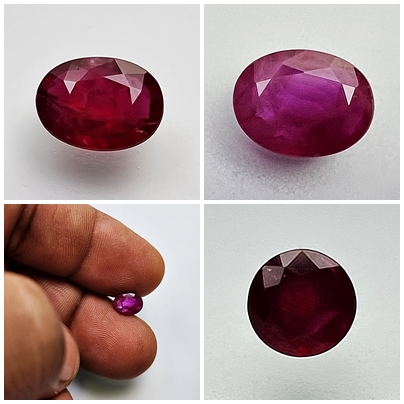
African Ruby: Gemstone Information
Exploring the Allure of African Rubies
African rubies, renowned for their rich color and exceptional clarity, are among the most coveted gemstones in the world. Here, we delve into the fascinating world of African rubies, exploring their origins, characteristics, and allure.
Origins and Sources: African rubies are primarily sourced from several countries across the African continent, including Mozambique, Madagascar, and Tanzania. Each region yields rubies with distinct characteristics, from the intense red hues of Mozambican rubies to the vivid pinkish-red tones of Madagascan rubies.
Characteristics: African rubies are prized for their vivid color, which ranges from deep red to pinkish-red hues. They often exhibit excellent clarity and brilliance, with few to no visible inclusions. African rubies are typically found in sizes ranging from small to large, making them suitable for a variety of jewelry styles, from delicate earrings to statement necklaces.
Allure and Symbolism: Rubies have captivated humanity for centuries with their fiery beauty and symbolic significance. In many cultures, rubies are associated with passion, vitality, and prosperity, making them popular choices for engagement rings, anniversary gifts, and heirloom jewelry pieces. African rubies, with their intense color and exceptional quality, are particularly prized by collectors and connoisseurs.
Mining and Sustainability: The mining of African rubies plays a vital role in the local economies of producing countries, providing employment opportunities and supporting livelihoods. However, it is essential to ensure that ruby mining is conducted responsibly and sustainably, with proper environmental and social safeguards in place to protect local communities and ecosystems.
Market Value and Investment Potential: African rubies command premium prices in the gemstone market due to their rarity, beauty, and quality. High-quality African rubies with exceptional color, clarity, and size can fetch significant sums at auction houses and fine jewelry retailers. As with any investment, it is essential to conduct thorough research and seek advice from gemstone experts before purchasing African rubies for investment purposes.
Conclusion: In conclusion, African rubies are prized for their exceptional beauty, rarity, and symbolic significance. Whether you’re drawn to their fiery red hues, their sparkling brilliance, or their rich cultural heritage, African rubies are a timeless symbol of elegance and sophistication. Explore Gemfame’s collection of African rubies to discover the allure of these exquisite gemstones firsthand.




